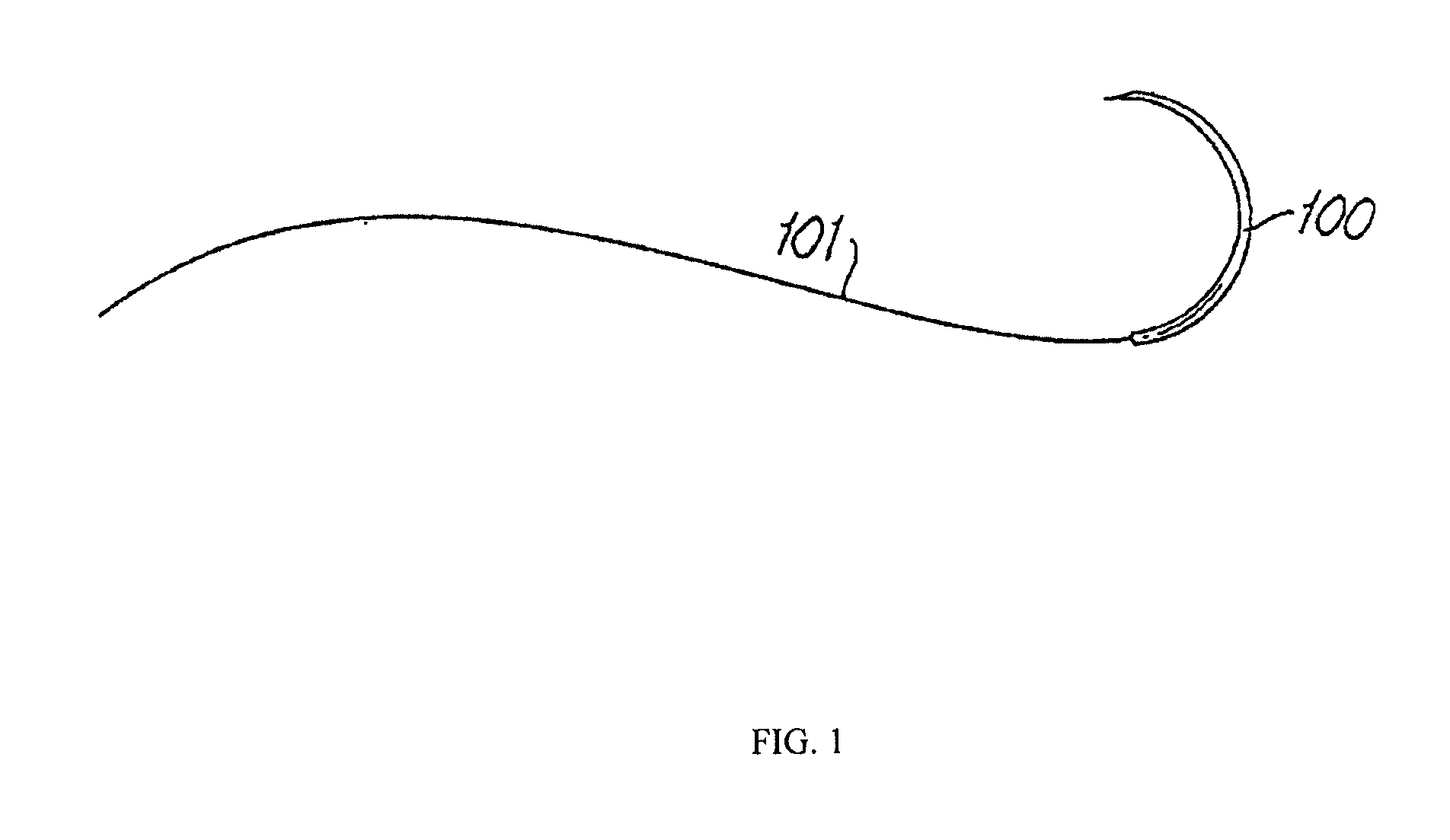Synthesis of polyesters with precisely sequenced two or more structural units
a technology of structural units and polyesters, applied in the directions of oligomerisation, organic chemistry, esters preparation, etc., can solve the problems of complex formation of copolymers, heterogeneous polymer chain of such copolymers, and copolymers of haloacetic acid and haloproponic acid
- Summary
- Abstract
- Description
- Claims
- Application Information
AI Technical Summary
Benefits of technology
Problems solved by technology
Method used
Image
Examples
example 1
Construction of Halocarboxylic Acid Dimer
[0112]Construction of bromoacetyl-(L)lactic acid dimer. To a solution of L-lactic acid (BioSynth) (22.88 gram, 0.254 mole) in CH3CN (100 ml) was added dropwisely bromoacetyl chloride (TCI) (20 gram, 0.127 mole) in CH3CN (100 ml) with stirring at reflux temperature for 16 hours. The solution was then cooled down to room temperature and the solvent CH3CN was removed in vacuum. The residual mixtures was dissolved in DI H2O (200 ml) and extracted with 2×200 ml ethyl acetate. The combined organic phase was washed with NaCl saturated aq. Solution (200 ml) and dried with MgSO4. A light yellowish liquid crude product was obtained after the solvent ethyl acetate was removed in vacuum. The crude product is vacuum distilled. The exact vacuum is not recorded but the temperature was at 110° C.˜120° C. The final product (23.37 gram) is obtained with yield of 87%. 1H NMR: (400 Mz, CDCl3): δ11.5 (b, 1H); δ5.182 (q, 1H, J=6.8 Hz); δ3.926 (s, 2H); δ1.589 (d, 3...
example 2
Construction of Polyester from Halocarboxylic Acid Dimer
[0113]Construction of alternative copolymer of glycolic acid and L-lactic acid. To a solution of bromoacetyl-(L)-lactic acid (3.165 gram, 0.015 mole) in diethyl ether anhydrous (10 ml) was added dropwisely triethylamine (J. T. Baker) (1.518 gram, 0.015 mole) in diethyl ether anhydrous (10 ml) with stirring at room temperature (22° C.). The solution turned cloudy while the half of amine was added and the temperature raised as the flask was felt warm. White precipitate was deposited to the flask wall in about 2˜3 hours. The solution was allowed to stand with stirring at room temperature for 3 days and ether was then poured out. The residual precipitate was stirred with ethanol (50 ml) for two hours at room temperature and white powder was obtained (1.1 gram) with yield of 56.4% after filtration. 1H NMR (400 Mz, DMSO): δ1.469 (d, 3H, J=7.2 Hz); δ4.875 (dd, 2H, J=40.8, 24.4 Hz); δ5.237 (q, 1H, J=6.8 Hz); 13C NMR (400 Hz, CH3CN): δ1...
example 3
Construction of Halocarboxylic Acid Trimer
[0114]Construction of bromoacetyl-(L)-lactiyl-(L)-lactic acid trimer (BrGLL). To a solution of bromoacetyl-L-lactic acid (6.33 gram, 0.03 mole) in anhydrous acetone (50 ml) is added thionyl chloride (4.89 gram, 0.041 mole) and refluxed at 60° C. for 16 hours. The reaction is monitored with HPLC and when all bromoacetyl-L-lactic acid is reacted, a solution of L-lactic acid (BioSynth) (5.4 gram, 0.06 mole) in acetone (50 ml) is added. The solution is continually refluxed for another 16 hours. The solution is then cooled down to room temperature and the solvent acetone is removed in vacuum. The residual mixtures is dissolved in DI H2O (100 ml) and extracted with 3×100 ml ethyl acetate. The combined organic phase is washed with NaCl saturated aq. Solution (100 ml) and dried with MgSO4. The product is obtained after the solvent ethyl acetate is removed in vacuum.
PUM
| Property | Measurement | Unit |
|---|---|---|
| temperature | aaaaa | aaaaa |
| temperature | aaaaa | aaaaa |
| reaction temperature | aaaaa | aaaaa |
Abstract
Description
Claims
Application Information
 Login to View More
Login to View More - R&D
- Intellectual Property
- Life Sciences
- Materials
- Tech Scout
- Unparalleled Data Quality
- Higher Quality Content
- 60% Fewer Hallucinations
Browse by: Latest US Patents, China's latest patents, Technical Efficacy Thesaurus, Application Domain, Technology Topic, Popular Technical Reports.
© 2025 PatSnap. All rights reserved.Legal|Privacy policy|Modern Slavery Act Transparency Statement|Sitemap|About US| Contact US: help@patsnap.com



